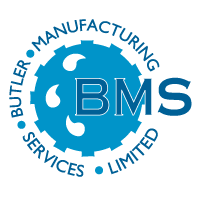Sewage Parameters 7: Chemical Oxygen Demand (COD)
When discussing package sewage treatment one parameter that we neglected to cover is that of COD which means Chemical Oxygen Demand. It is a test of the amount of oxygen required to oxidise organic matter in a sewage sample by chemical oxidation with a powerful oxidising agent such Potassium Dichromate.
COD is closely related to BOD or Biochemical Oxygen Demand, the difference being that BOD is a test of the level of organic matter that can be biologically oxidised while COD is a test of the amount of organic matter that can be chemically oxidised. (A full explanation of any of the parameters can be found by clicking on the blue links).The higher the BOD/COD the more oxygen stripping capacity the discharged effluent has when discharged into receiving waters (oxygen is used biologically/chemically to break down the organic matter) and the more potential for damage to biological life in those waters. COD is normally higher than BOD because more organic compounds can be chemically oxidised than biologically oxidised. This includes chemicals toxic to biological life, which can make COD tests very useful when testing industrial sewage as they will not be captured by BOD testing.
In regards to normal domestic effluent e.g. BOD & Suspended Solids (SS) 300 mg/l, which is usual for package sewage treatment systems, COD is not always stated as part of the discharge license. However, COD does have a big advantage over BOD in that the test only takes approximately three hours, as opposed to the five days required for BOD testing. Influent BOD in normal domestic sewage is generally 300 mg/l and it is then treated to at least 25 mg/l (as per European norms) before discharge to minimise pollution potential (oxygen stripping as discussed above).
Most package sewage treatment plants or package wastewater treatment plants such as the BMS Blivet are designed to achieve 25 mg/l of BOD at a minimum but much more stringent BOD levels down to 5 mg/l can be achieved if specified. Furthermore, there is usually a stable ratio between COD/BOD in a stable wastewater flow. BMS have recorded average ratios of 2-3 mg/l COD to 1 mg/l BOD over its 30 years of business. Influent COD in normal domestic sewage is therefore generally 600 - 900 mg/l and it is then treated to at least 75 -100 mg/l before discharge to minimise pollution potential. Most package sewage treatment systems such as the BMS Blivet are designed to achieved 75 mg/l of COD at a minimum but much stringent more stringent COD levels down to 10-15 mg/l can be achieved if specified based on normal domestic sewage. Over a period of time if BOD/COD are tested from the same effluent samples, it is usually possible to establish a set ratio between the two parameters. Therefore, if quick feedback is required on the pollution potential of sewage effluent, then COD testing is the easiest way with the established ratio figures used to extrapolate the BOD. Indeed, as technology evolves real time monitoring of parameters such as COD, SS, Ammonia, Total Nitrogen and Phosphorus are now possible giving greater or operational control than ever before.
Worked Example Calculating BOD:COD Ratio
Outlet Effluent Parameters
BOD 20 mg/l COD 55 mg/l
BOD 15 mg/l COD 49 mg/l
BOD 17 mg/l COD 50 mg/l
Average BOD: 20 mg/l + 15 mg/l + 17 mg/l = 17.3 mg/l Average COD: 55 mg/l + 49 mg/l + 50 mg/l = 53 mg/l
Ratio 53 mg/l ÷ 17.3 mg/l = 1 mg/l BOD : 3.1 mg/l of COD
Using BOD:COD Ratio
Reading of COD of 60 mg/l BOD:COD Ratio as above 1:3.160 mg/l ÷ 3.1 = 19.35 mg/l (expected level of BOD)
Please note the BOD:COD ratio should only be used as a guide. The more data that the ratio is based on, the more accurate it is likely to be.
A bit about the company:
BMS is a quality manufacturer of package products for wastewater and stormwater treatment. BMS started in 1986 and has exported products to over 50 countries around the world. It is a third generation family business with huge expertise in wastewater and stormwater.
BMS manufacture a full range of products for surface water and wastewater treatment including our pioneering next generation RBC system the Aerotor, which forms part of our world leading Blivet package sewage treatment plant, a ‘one stop shop’ for all surface water products from design to installation including attenuation, interceptors, holding tanks (incl. chemical resistant), hydrobrakes, rainwater harvesting tanks & vortex silt/oil/debris separators, fully fitted pumping stations, our plug & play vehicle wash water recycling system; the Recyclone and much more. All BMS products manufactured in our ISO 9001 factory are made using solar energy from our own PV system.
BMS also can provide a Free Design Service for Sewage Treatment, Pump Stations or Surface Water and a full O&M, Repair, Advice and Testing service for existing installations. We also can do free CPD Presentations on Sewage Treatment/Surface Water Management at any location.
We would be delighted to discuss any requirements you might have and we are available to meet you at your convenience. Please do not hesitate to contact us.
© Butler Manufacturing Services 2024.

